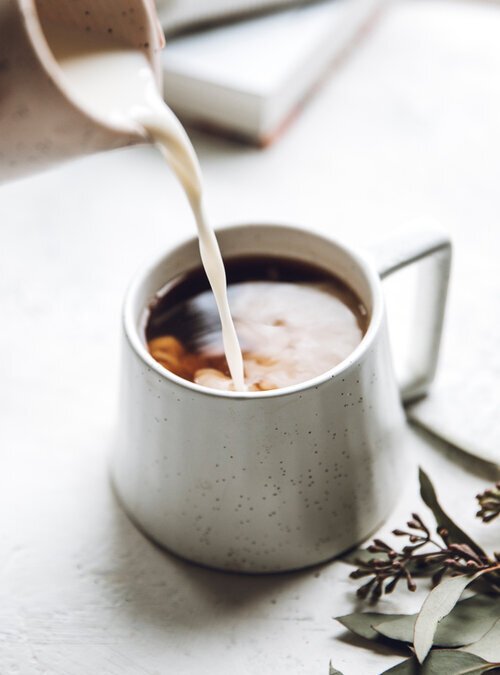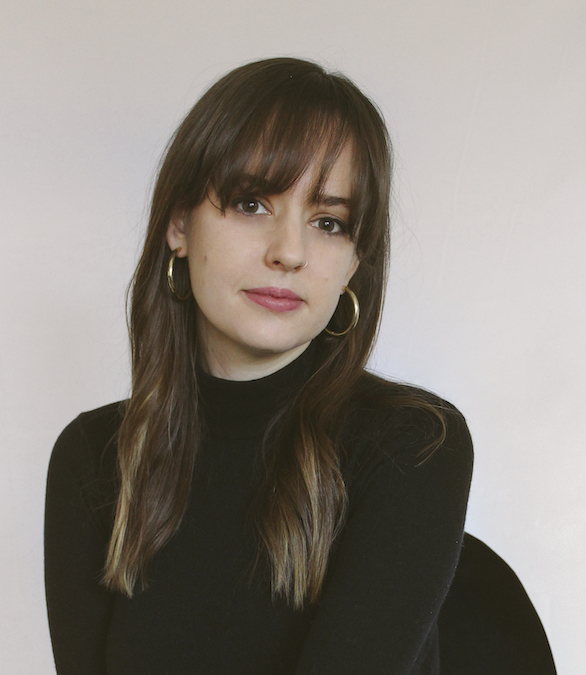
Myth Or Magic? The Benefits Of Mushroom Coffee
Rethinking My Relationship to Coffee
Coffee and I have somewhat of an unhealthy relationship—I drink more than a few cups a day. It’s not because of the taste, either, although I enjoy the aroma of freshly ground beans and frothy Oatly. Instead, there’s something about the consistency of my morning beverage, and how I can always count on it.
For me, coffee is about the ritual. Like when starting a road trip with a piping mug of gas-station brew. Or when camping in the woods and drinking instant coffee around a fire. Whether I’m traveling or working at my desk, coffee is my constant companion.
“While it was easier to get away with being constantly caffeinated in my twenties, I’m noticing its effect much more as I age.”
Despite my morning (and afternoon) habit, I’ve never been much of a connoisseur; neither have I been too concerned about the health aspects. My usual routine consists of an automatic drip and whatever ground coffee is on sale. But while it was easier to get away with being constantly caffeinated in my twenties, I’m noticing its effect much more as I age, and I’ve realized that it may be time to explore a more thoughtful approach to my consumption. This has led me to wonder, are there healthier alternatives to coffee?
Cue: mushrooms.
Where Does Mushroom Coffee Come From?
When I first heard about mushroom coffee, my first thought was, Why would someone want to drink hot water with floating mushrooms? I joined the masses of other very confused coffee fanatics as I frantically researched to learn more.
“Because coffee was rationed, the Finnish people were forced to find alternative ingredients.”
Mushroom coffee, I discovered, saw its beginnings in Finland during World War II. Because coffee was rationed, the Finnish people were forced to find alternative ingredients as a substitute for their favorite beverage. (Finland has the highest coffee consumption of any country in the world—my kind of place).
According to Tero Isokauppila, the Finnish founder of Four Sigmatic, his ancestors foraged Chaga mushrooms from birch trees and then steeped and pressed them into ‘coffee’ when the real thing wasn’t available. Of course, the Finnish people were not the first to use functional mushrooms in tonics and teas to aid wellness—medicinal mushrooms have been used for centuries in Asia and specifically in Chinese medicine—but they were the first to use mushrooms as a replacement for coffee.
“Medicinal mushrooms have been used for centuries in Asia and specifically in Chinese medicine.”
Pressed mushroom water isn’t the beverage that’s on the market now, though. And it’s not something I’m too eager to try. Rather, a few decades later and more recently, Isokauppila dreamt up adding Chaga mushrooms to coffee for numerous health benefits. The mushroom coffee trend was born.
What Are The Health Benefits?
Studies show that, while coffee can be healthy for us, the positive aspects are generally outnumbered. It’s the mushrooms that can make for a more balanced cup.
“Mushroom coffee is ground beans mixed with functional mushrooms and added adaptogens.”
The recipe is pretty straightforward: mushroom coffee is ground beans mixed with functional mushrooms and added adaptogens. And the most common mushrooms used include:
-
Chaga for its high antioxidant levels and aiding in gut health
-
Lion’s Mane to support mental wellness and aid in memory and focus
-
Cordyceps to promote energy and physical performance (this one is commonly touted for athletes)
-
Reishi (also called Lingzhi), which supports immunity, improves sleep, and reduces stress
When added to coffee, these mushrooms can counter coffee’s adverse side effects, including aggravated sleep patterns, dehydration, headaches, and dependency. You get the same great taste and ritual of a morning brew but without the midday caffeine crash. Sign me up.
“When added to coffee, these mushrooms can counter coffee’s adverse side effects.”
The Experiment: I Drank Mushroom Coffee For A Month
I tried two different coffee alternatives during my experiment, the first of which was Four Sigmatic’s Lion’s Mane Blend. This specific blend is made with single-origin Arabica coffee beans (organic and fair trade), plus Organic Chaga and Organic Lion’s Mane mushrooms.
Immediately, I noticed how surprisingly pleasant and familiar it tasted. The beverage wasn’t brothy or earthy; it just tasted like good coffee. I even forgot I was drinking mushrooms on a few occasions. I also loved that I could make it in my drip coffee maker (love that automatic timer), so really, the entire experiment felt like drinking regular grocery store coffee, except with the added health benefits.
As for whether I experienced these benefits, I can’t say with certainty that the mushrooms aided in focus and immunity—though I did complete a lot of overdue projects throughout the month, and I’ve stayed healthy. My guess is that I’d have to include functional mushrooms in my diet for a longer period to experience any noticeable changes. I was also left feeling more satisfied after only one or two cups. I generally drink coffee on and off throughout the day, but with the mushroom coffee, I didn’t feel dependent or like I needed a caffeine boost in the late afternoon.
A few other things I love about this specific mushroom coffee is that it’s organic and fair trade, and the mushrooms are sustainably wild-harvested. It’s not lost on me that my usual grocery store coffee is not the most sustainable or ethical option, so I was glad to be enjoying a more mindful morning beverage.
“I generally drink coffee on and off throughout the day, but with the mushroom coffee, I didn’t feel dependent or like I needed a caffeine boost in the late afternoon.”
The second coffee I tried was not coffee at all. Instead, it was a coffee-free drink with an organic four-mushroom blend.
MUD/WTR, a California-based company, lauds itself as the most delicious and health-conscious coffee alternative. Containing just 14mg of caffeine, the organic four-mushroom elixir is made from Chaga, Cordyceps, Reishi, and Lion’s Mane mushrooms. The powder, which comes in an aluminum tin, also includes an assortment of spices—namely turmeric, masala chai, sea salt, cacao, and cinnamon. It tastes like winter in a cup.
The thing I loved most about this drink is that making it was truly a morning ritual. From boiling my water to blending the powder to using the cute hand wand to froth my oat milk, it was a visceral experience. My mornings were noticeably slower, and I was more thoughtful about what I was consuming. I found the entire process indulgent in the very best way, and it quickly became part of my self-care routine.
While I wish I could say I was instantly cured of my need for coffee, I did find myself missing the aroma and density. Despite the delicious flavor of MUD/WTR (it’s truly tasty, and the frothy milk makes it seem like you’re sipping on a latte), it didn’t satisfy me in the same way. Neither did I notice any immediate changes in my mood or health (except for that I missed coffee). Again, I’d probably need to make a long-term swap to experience the touted magic, so I’m not writing it off completely. As I love the idea of reducing my coffee and caffeine intake, I’ll likely keep coffee-free mushroom elixirs on hand for when I’m craving a warm and healthy drink in the afternoon.
Overall, I was satisfied with this experiment and intrigued by the history and the health benefits of functional mushrooms. This project taught me about the many coffee variants and alternatives for those of us who enjoy a few too many cups and want to reduce our intake.
Is the mushroom coffee actual magic? The verdict is still out for me. But let me know if you give it a try. I’d love to hear about your experience. ✨
RELATED READING
Kayti Christian (she/her) is an Editor at The Good Trade. Growing up beneath the evergreens in the Sierra Nevadas, she returns to California after a decade split between states—including three years lived abroad. With an MA in Nonfiction Writing, she’s passionate about storytelling and fantastic content, especially as it relates to mental health, feminism, and sexuality. When not in-studio, she’s camping, reading memoir, or advocating for the Oxford comma.

